Torah Portion Shoftim Complete
Home » Torah Portion Shoftim Complete
Deuteronomy 16:18 - 21:9
Isaiah 51:12 - 52:12
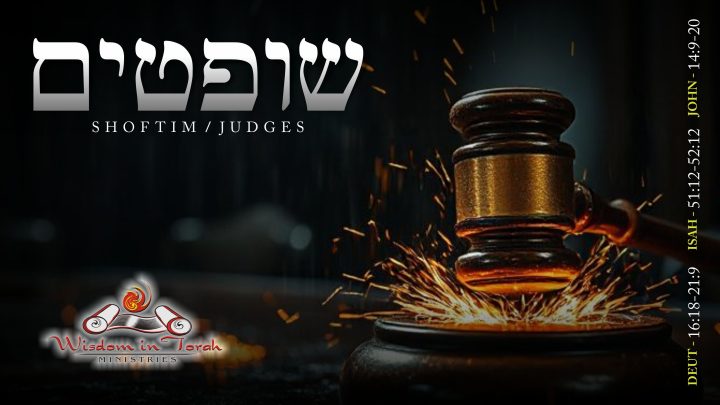
Don't Forget to Share!
This Parashah covers the appointing of judges, the administration of justice, provision for the Levites, the forbidding of magic and witchcraft, establishing cities of refuge, laws concerning boundary markers and witnesses, the rules for warfare, and the expiation of unsolved murder.
This posting includes multiple years of Torah portions done by Wisdom in Torah. This includes:
This page includes Torah Portions from multiple years covered by Wisdom in Torah. Each year we covered the Torah from a different perspective so you can explore each Parashah from a different perspective and focus.
- 2010 Portions: Focus on Messianic connections in the Parashah
- ANET Portions: Focus on the ancient Near Eastern cultural context of the Parashah
- Mitzvot Portions: Focus on explaining and exploring the commandments found in the Parashah (in progress)
- 2015 Portions: Revisiting the Parashah looking at the ancient cultural context more in depth with additional areas that have been researched
- Brit Portions: Focus on connecting the Brit Hadashah (New Testament) to the Parashah
Audio
Oops, this is members-only content
Resources
The following is a list of recommended resources for this teaching:
- More resources coming soon...
PDF for the ANET Study: Shoftim
Further information for the Nugget:
16:18-17:13
Establishing Justice
16:18–20. judiciary institutions in ancient Near East. As evidenced by the preface to the Code of Hammurabi (c. 1750 b.c.) and the statements made by the “eloquent peasant” in Egyptian wisdom literature (c. 2100 b.c.), those in authority were expected to protect the rights of the poor and weak in society. “True justice” (see Lev 19:15) was required of kings, officials and local magistrates. In fact, the “world turned upside down” theme found in the book of Judges and in prophetic literature (Is 1:23) describes a society in which “laws are enacted, but ignored” (for example in the Egyptian Visions of Neferti [c. 1900 b.c.]). An efficiently administered state in the ancient Near East depended on the reliability of the law and its enforcement. To this end, every organized state created a bureaucracy of judges and local officials to deal with civil and criminal cases. It was their task to hear testimony, investigate charges made and evaluate evidence, and then execute judgment (detailed in the Middle Assyrian laws and the Code of Hammurabi). There were some cases, however, that required the attention of the king (see 2 Sam 15:2–4), and appeals were occasionally forwarded to that highest magistrate (as in the Mari texts).
16:19. bribes in the ancient world. The temptation for judges and government officials to accept bribes is found in every time and place (see Prov 6:35; Mic 7:3). Taking bribes becomes almost institutionally accepted in bureaucratic situations as competing parties attempt to outmaneuver each other (see Mic 3:11; Ezra 4:4–5). However, at least on the ideal level, arguments and penalties are imposed to eliminate or at least lessen this problem. Thus Hammurabi’s code places harsh penalties on any judge who alters one of his decisions (presumably because of a bribe), including stiff fines and permanent removal from the bench. Exodus 23:8 forbids the taking of bribes and the perversion of justice as an offense against God, the weak and innocent, and the entire community (see Is 5:23; Amos 5:12).
16:21. Asherah poles. See the comments on Exodus 34:13 and Deuteronomy 7:5; 12:3.
16:22. sacred stones. See the comments on Exodus 23:24 and Deuteronomy 12:3.
17:3. astral worship. The worship of the celestial bodies (sun, moon, planets, stars) was common throughout the ancient Near East. One of the principal gods of Assyria and Babylonia was a sun god (Shamash), and a moon god (Thoth in Egypt; Sin in Mesopotamia; Yarah in Canaanite religion) was widely worshiped. During most of their history the Israelites would have been familiar with and heavily influenced by Assyrian culture and religion (see Deut 4:19; 2 Kings 21:1–7; 23:4–5). These forbidden practices continued to be a source of condemnation during the Neo-Babylonian period, as Israelites burned incense on altars placed on the roofs of their houses to the “starry hosts” (Jer 19:13). Because worship of the elements of nature diminished Yahweh’s position as the sole power in creation, they were outlawed. However, the popular nature of this type of worship continues to appear in prophetic literature and in Job (see Job 31:26–28; 38:7). For additional information see comment on Deuteronomy 4.
17:5. stoning as capital punishment. See the comment on 13:10.
17:6–7. witnesses in the ancient court system. The task of serving as a witness occurs in a variety of legal contexts and is a solemn duty which is not to be abused (Ex 20:16; Num 35:30; Deut 19:16–19). It can involve hearing testimony, signing commercial or civil documents, or testifying on a legal matter (laws of Ur-Nammu, Code of Hammurabi and the Middle Assyrian laws). Witnesses serve an essential purpose in verifying business transactions (Jer 32:44; Hammurabi), such as the sale of property, marriages and changes in social status (Middle Assyrian laws). Occasionally, they function as representatives of the people in matters brought before a god (Ex 24:9–11; Hammurabi).
17:8–13. verdict by omen in ancient Near East. In situations where physical evidence was not present or was insufficient, a verdict could be determined by the reading of omens. This meant that plaintiffs had to consult religious professionals (Levitical priests in 17:9), whose service included seeking divine verdicts. Among the divination methods used in the ancient Near East were the examination of a sheep’s liver (hepatoscopy), the interpretation of dreams (specific Babylonian texts contain lists of dreams and what they portend— accidents, deaths, military defeats or victories; see Dan 2:9), the noting of freak occurrences in nature and the use of astrological charting (especially during the period of the Assyrian empire in the tenth to seventh centuries b.c.). In the biblical text, the Urim and Thummim (Ex 28:30; Num 27:21) were used to help divine God’s will, and a number of the prophets point to famines, droughts and other natural calamities as a sign of God’s judgment on an unfaithful people (Amos 4:10–12; Hag 1:5–11).
17:14-20
The King
17:14–20. king chosen by deity. The Sumerian King List, which purports to contain the names of kings from before the flood until the end of the Ur III dynasty (c. 2000 b.c.), begins with the line, “When the kingship was lowered from heaven.” The assumption throughout Mesopotamian history is that every ruler received his certification to reign from the gods. Thus Hammurabi (1792–1750 b.c.) speaks in the prologue to his law code of the gods’ establishment of “an enduring kingship” in Babylon and how the gods Anum and Enlil specifically chose him to rule on behalf of the people. The result is an obligation imposed on the king to rule wisely and with justice, never abusing his power and being responsible to the commands and requirements of the gods. The situation is slightly different in Egypt, where each pharaoh was considered to be a god.
17:16. proliferation of horses. Since horses were used primarily to draw chariots and carry horsemen into battle, the acquisition of large numbers of these animals implies either an aggressive foreign policy or a monarch who wishes to impress his people and his neighbors with his wealth and power. The reference to Egypt is suggestive of dependence on that nation as an ally and a supplier of horses for war (Is 36:6–9). Such alliances in the late monarchy period proved disastrous for Israel and Judah and were roundly condemned by the prophets (Is 31:1–3; Mic 5:10).
17:17. royal marriage as alliance. Marriage was a tool of diplomacy throughout the ancient Near East. For instance, Zimri-Lim, the king of Mari (eighteenth century b.c.), used his daughters to cement alliances and establish treaties with his neighboring kingdoms. Similarly, Pharaoh Thutmose IV (1425–1412 b.c.) arranged a marriage with a daughter of the Mitannian king to demonstrate good relations and end a series of wars with that middle Euphrates kingdom. Solomon’s seven hundred wives and three hundred concubines (1 Kings 11:3) were a measure of his power and wealth (just as horses are in Deut 17:16), especially his marriage to the daughter of the pharaoh (1 Kings 3:1). While the political advantages were quite evident, the danger of such marriages is demonstrated in the introduction of the worship of other gods by Solomon’s wives (1 Kings 11:4–8).
17:17. royal treasuries. The theme of excessive acquisition of royal symbols of power (horses, wives, gold and silver) continues in this admonition against overtaxing the people simply to fill the royal treasury. All of the cate-gories of wealth are said to lead to excessive pride, apostasy and a rejection or diminution of Yahweh’s role (compare 8:11–14). The vanity of kings who amass wealth without purpose other than pride is found in Ecclesiastes 2:8–11 and Jeremiah 48:7. The treasuries typically contained the precious metal assets of temple and state, including contributions as well as plunder. Though coinage or bullion may have been included, much of it would be in the form of jewelry, vessels for ritual use, religious objects or the various accessories of royal or wealthy households. Payment of tribute at times required drawing from or even emptying the treasuries (see 1 Kings 14:26; 2 Kings 18:15). Excavations or descriptions of temples and palaces often indicate rooms as treasuries, and royal officers included keepers of the treasuries.
[17:18–20. king subject to the law. In Egypt and Mesopotamia the king was the fountainhead of law. It was his task to perceive and maintain the order that was built into the universe (Egyptian ma’at; Mesopotamian me). The king could not be “brought to justice,” except by the gods. He was not above the law, but there was no mechanism by which he could be tried in a human court. Judicially this may have been no different in Israel, though the prophets, as spokesmen for the deity, could call the king to account.]
18:1-13
Priests and Levites
18:1–5. provision for Levites. Whether or not the worshiper ate a portion of the sacrifice, a number of the sacrifices provided an opportunity for the priests to eat. This was also true in Babylonian practice, where the king, the priest and other temple personnel received portions of the sacrifices. As early as Sumerian texts it was considered a grievous crime to eat that which had been set apart as holy. See also the comment on Numbers 18:12–19 for tithes paid to the priests.
18:6–8. function of the Levites in the towns. During the early settlement period, Levites officiated at local shrines and altars. It would have been their role to serve as religious professionals, performing sacrifices and instructing the people on the law. While some Levites may have been tied to these places for generations (1 Sam 1:3), there is also evidence of itinerant Levites, who traveled about the country and were hired to serve for a time at a local shrine or high place (Judg 17:7–13). Without an inheritance of their own (Josh 14:3–4), the Levites stood out within a society that was territorial. The Levites were supposed to instruct the people in proper worship, though the book of Judges makes it clear that sometimes they were a major part of the problem rather than the solution. They were supposed to be preservers of tradition and law and would have often served as judges.
18:9-22
Receiving Information from Deity
18:10. divination. See the comment on Leviticus 19:26. Divination involves a variety of methods used by prophets (Mic 3:11), soothsayers, mediums and sorcerers to determine the will of the gods and to predict the future. These included the examination of the entrails of sacrificial animals, the analysis of omens of various types and the reading of the future in natural and unnatural phenomena (see Gen 44:5). While there were acceptable divination practices among the Israelites (use of the Urim and Thummim), what is being condemned here is a group of practitioners, who served as professional fortunetellers.
18:10. sorcery. Since magic in the ancient world was a means of contacting the supernatural realm, it was considered to have two facets: good magic and evil. In Mesopotamia and among the Hittites harmful magic was practiced by sorcerers and was punishable by death. It involved the use of potions, figurines and curses designed to bring death, disease or bad luck to the victim. This was distinguished from the practical and helpful magic of professional exorcists and “old women,” whose role included the rites involved in temple construction and dedication, as well as medical aid. Only in Egypt was there no distinction between white and black magic. There the practitioners’ job involved intimidating demons and other divine powers to perform required tasks or to remove curses. The Israelite law totally rejected all these practices because of their polytheistic character and the diminishing of Yahweh’s role as lord of creation (see Ex 22:18).
18:10. omens. One of the priestly classes mentioned in Mesopotamian texts is the baru-diviners. It was their task to perform extispicy (generally on lambs), examining the liver and interpreting this omen for the person who has asked for a reading of the future. Thebaru might be consulted by a king who wished to go to war (compare 1 Kings 22:6), a merchant about to send out a caravan or a person who had become ill. Government officials often included the report of omens in their letters (Mari texts). However, since omens were not always clear, several groups of diviners might be used before action was taken. An entire body of omen texts (with descriptions of past events and predictions) were archived in temples and palaces for consultation by staff diviners. Even clay models of livers were used in schooling apprentices in the trade.
18:10. witchcraft. Like sorcery, witchcraft was generally classed as an illegitimate use of magic. Its practitioners might serve in royal courts or temples or as local herbalists and itinerant diviners, who would, for a price, provide the means to harm or destroy an enemy (see Lev 19:26; 20:6; 2 Kings 21:6). The Mesopotamian distinction between good and evil magic is lost in Israelite law, where the female witch is condemned (Ex 22:18) and the words of sorcerers are declared to be unreliable (Jer 27:9; Mal 3:5).
18:11. spells, medium, spiritist. The practitioners of spiritism and sorcery are condemned because of their association with Canaanite religion and because their “art” attempted to circumvent Yahweh by seeking knowledge and power from spirits. They represented a form of popular religion that was closer to the folk practices of the common people and served as a form of “shadow religion” for many. Sometimes, because of its association with divination, their rituals and methods stood in direct opposition to official religion or as an alternative to be used in times of desperation (see Saul’s use of the outlawed witch of Endor in 1 Sam 28). Sorcery and potions used in the practice of magic were also banned in the Code of Hammurabi and the Middle Assyrian laws, suggesting that the prohibition and fear of these practices were not unique to Israel.
18:11. consulting the dead. Although there was no clear sense of an afterlife in ancient Mesopotamia, no envisioning of a place of reward or punishment, ancestor worship did exist, and offerings were made to the spirits of the dead. A group of magical practitioners created a means for consulting the spirits of the dead to find out about the future (see the witch of Endor in 1 Sam 28:7–14). This was called necromancy and could involve consulting a particular or “familiar” spirit, or it could be the raising of any ghost attracted by the spells of the medium. Ritual pits, stuffed with bread and blood, were commonly used in Hittite ritual by diviners, and the Greek hero Odysseus used a pit filled with blood to attract the shades of his dead companions. It was believed that if libations were poured out to them, the spirits of dead ancestors could offer protection and help to those still living. In Babylon the disembodied spirit (utukki) or the ghost (etemmu) could become very dangerous if not cared for, and such spirits were often the objects of incantations. Proper care for the dead would begin with proper burial and would continue with ongoing gifts and honor of the memory and name of the deceased. The firstborn was responsible for maintaining this ancestor worship and therefore inherited the family gods (often images of deceased ancestors).
18:10–13. worldview basis for prohibiting divination. The worldview promulgated in the Old Testament maintains that Yahweh is the sole God and is the ultimate power and authority in the universe. In stark contrast, the polytheistic religions of the ancient Near East did not consider their gods (even as a group) to represent the ultimate power in the universe. Instead they believed in an impersonal primordial realm that was the source of knowledge and power. Divination attempted to tap into that realm for the purposes of gaining knowledge; incantations tried to utilize its power. Both divination and incantation can therefore be seen to assume a worldview that was contradictory to Yahweh’s revealed position.
18:14–22. function of the prophet. These individuals were more than simple religious practitioners. While some of them were members of the priestly community, they stood outside that institution. Their role was to challenge the establishment and the social order, to remind the leadership and the people of their obligation to the covenant with Yahweh and to provide warning of the punishment that went with violation of the covenantal agreement. The prophet is invested with special powers, a message and a mission, and there is a special compulsion associated with being called as a prophet. It can be denied for a time (see Jonah’s flight) but ultimately must be answered. It should also be noted that prophets may be reluctant to speak harsh words or condemnations of their own people. When this occurs, the prophet will experience a compulsion to speak that cannot be resisted (Jer 20:9). Since they speak a message that comes from God, they separate themselves from the words and thus cannot be charged with treason, sedition or doomsaying. The message is thus the most important thing about the prophet, not the prophet himself or herself. Certainly, there were some prophets like Balaam and Elijah who acquired a personal reputation, but this was based on their message or their ability to speak for God. For a prophet to gain credibility with the people, the message must come true. Although sometimes the prophets are mentioned as part of the cult community (Isaiah and Ezekiel) and as court prophets (Nathan), they always seem to be able to stand apart from these institutions to criticize them and to point out where they have broken the covenant with God. In the early periods of the monarchy, the prophets primarily addressed the king and his court, much like their ancient Near Eastern counterparts did (they have been termed “preclassical” prophets). Beginning in the eighth century, however, they turned their attention increasingly to the people and became the social/spiritual commentators whom we most readily identify with the prophetic institution (the “classical” prophets and the “writing” prophets). Their role was not to predict as much as it was to advise of God’s policies and plans.
18:20–22. false prophecy. Like Deuteronomy 13:1–3 and its discussion of persons urging the worship of other gods, false prophets are generally those who speak in the name of other gods. Deuteronomy discounts the existence of these other gods and thus the veracity of their prophets. In cases where prophets presume to speak in Yahweh’s name without permission, the test of true prophecy is whether what they say actually occurs. There are a number of examples of false prophecy cited in the biblical text. Jeremiah rails against it in his accusation against Hananiah (Jer 28:12–17) and in his warning against other prophets who predicted a quick end to the exile (29:20–23). In some cases, the potential for confusion involved is such that events must take their course before the true prophet is revealed (see 1 Kings 22). The Israelites were not alone in their caution concerning false prophecy. In other cultures, however, they generally used divination to try to confirm the message of the prophet, but this was not permissible for Israel.
18:14–22. prophecy in the ancient Near East. Texts from Mesopotamia, Syria and Anatolia contain a large number of prophetic utterances, demonstrating the existence of prophets throughout much of ancient Near Eastern history. While some of these texts may actually fall into the realm of wisdom literature or omen reports, many involve individuals who claim to have received a message from a god. Most famous among these texts are about fifty texts from Mari (eighteenth century b.c.) that contain reports from both male and female prophets: warnings about plots against the king, admonitions from a god to build a temple or to provide a funerary offering, and assurances of military victory. These prophets present divine messages received in dreams or through omens. Others are said to fall into a trance state and speak as ecstatic prophets. This type of prophecy is also found in the eleventh-century b.c. Egyptian tale of Wenamon and in 1 Samuel 10:5–11 and 2 Kings 3:15.
Rico Cortes
39 thoughts on “Torah Portion Shoftim Complete”
Leave a Comment Cancel Reply
You must be logged in to post a comment.

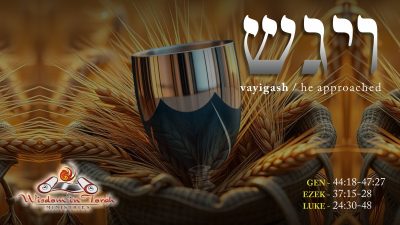
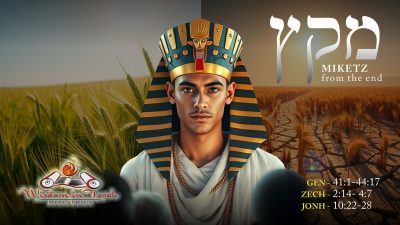
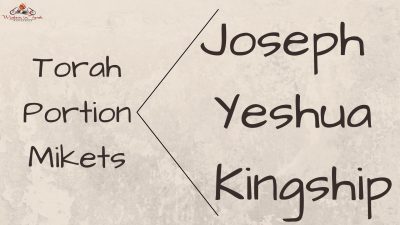


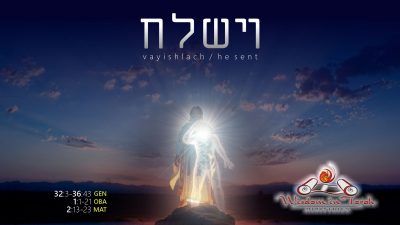
Great teaching. Around minute 20:40 of your teaching you said, “at least 70 years from Gospel of John and Book of Revelation.” My understanding is that the Gospel was writen around 80-90 AD and Revelation around maybe 90-96 AD. This then was the thinking that both the Gospel and Revelation are more mystical which then also agrees with your teaching, i.e. hard to understand for those unlearned. But the “church” then puts “babes” in Messiah right into the Gospel of John.
Rico; I watched your teaching on HRN. today,and then watched this one now, You always bring things to light for all of us. I do get a little up-set at HRN. because it will stay on, until you and my other favority teachers come on then WHAM off it goes.sometime I think that HaSatan don’t want me to hear what is been said.
Shabbat Shalom all
That was very good. Thank you Rico and Shabbat shalom.
EXCELLENT teaching! Thank you so much!
Thank you very much giving the right prospective of understanding Torah Rabboni
So as Torah pursuing believers of Yeshua HaMashiach, are we required by law, (as the Sanhedrin has decreed), to abstain from meat and dairy (at the same time) as well as using separate dishes for same? Are we sinning if we have a salad with beef and cheese on it?
Rico, I (more than my words could express) truly do appreciate your heart and your time, effort and the knowledge YHVH our Elohim has given to you, in what you share in each Torah portion! It is such a blessing to get to listen to and learn from what you share, here! (and, also, what Daniel and Ryan share)
Thank you so very much for following what YHVH has, and is, leading you to do, and to study and share with us here!! Please thank your wife (and children) for me, for allowing you to do this, because it edifies, encourages and helps us in our growth in Messiah Yeshua! I am learning so much here!!
HalleluYah! Praise YHVH, Who is our ultimate and awesome, long-suffering, merciful Teacher-above-all-teachers!! His Truth makes us free! His Love is everlasting! His Mercy endures for ever!